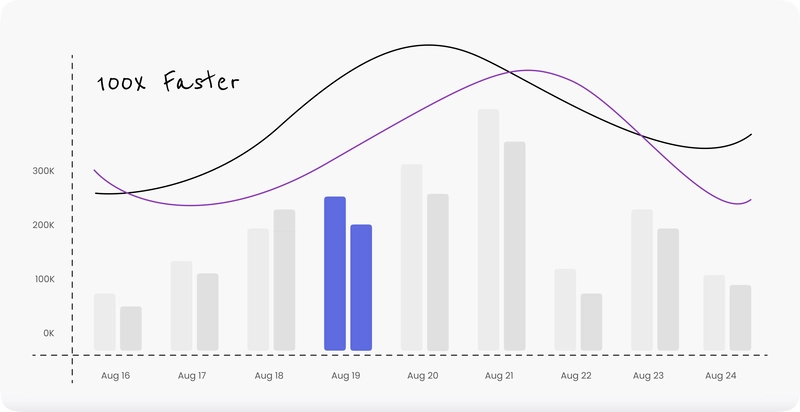The Ultimate Guide to Discounted Cash Flow (DCF) Valuation
A Discounted Cash Flow (DCF) model is a effective tool for valuing a enterprise by estimating its destiny coins flows and discounting them to give cost. Investors and analysts use it to determine whether an asset is overrated or undervalued. Here’s a step-via-step guide to constructing a robust DCF version. Step 1: Forecast Free Cash Flows (FCF) The foundation of a DCF version is free coins go with the flow (FCF), which represents the cash to be had after costs, taxes, and capital expenditures. To estimate FCF, follow this components: FCF = EBIT (1 - Tax Rate) + Depreciation & Amortization - Capital Expenditures - Change in Working Capital Start by means of studying ancient monetary statements and enterprise traits to venture future sales growth, expenses, and investments. Typically, analysts forecast coins flows for 5-10 years. Step 2: Determine the Discount Rate (WACC) Since money these days is really worth more than cash in the destiny, destiny cash flows ought to be discounted to reflect the time fee of money. The discount charge is frequently the Weighted Average Cost of Capital (WACC), which debts for each debt and equity financing. WACC Formula: WACC = (E/V * Re) + (D/V * Rd * (1 - Tax Rate)) Where: E = Market value of equity D = Market value of debt V = Total firm value (E + D) Re = Cost of equity (calculated using CAPM: Re = Risk-Free Rate + Beta * Market Risk Premium) Rd = Cost of debt Step 3: Calculate the Terminal Value (TV) Since businesses don’t operate for just 5-10 years, we need to account for value beyond the forecast period. There are two main approaches: Gordon Growth Model: TV = (Final Year FCF * (1 + g)) / (WACC - g) Where g is the long-term growth rate (typically 2-3%) Exit Multiple Method: TV = Final Year EBITDA * Industry Multiple Step 4: Discount Future Cash Flows to Present Value Using the Present Value (PV) formulation, bargain every 12 months’s cash go with the flow and the terminal value to the present: PV of FCF = FCF / (1 + WACC)^t Summing up the discounted cash flows gives the enterprise value (EV). Step 5: Calculate the Intrinsic Value per Share To find the intrinsic stock price: Subtract Net Debt from the Enterprise Value: Equity Value = Enterprise Value - Net Debt Divide by Shares Outstanding: Intrinsic Value per Share = Equity Value / Total Shares Outstanding Final Thoughts A well-based DCF version offers deep insights into a corporation’s intrinsic value. However, it's miles sensitive to assumptions about boom, reductions, and market situations. To improve accuracy, constantly behavior sensitivity analysis and examine consequences with opportunity valuation techniques like Comparable Company Analysis (CCA). By gaining knowledge of DCF modeling, buyers could make knowledgeable choices and identify undervalued possibilities within the marketplace. Read more: How to Build a Discounted Cash Flow (DCF) Model


A Discounted Cash Flow (DCF) model is a effective tool for valuing a enterprise by estimating its destiny coins flows and discounting them to give cost. Investors and analysts use it to determine whether an asset is overrated or undervalued. Here’s a step-via-step guide to constructing a robust DCF version.
Step 1: Forecast Free Cash Flows (FCF)
The foundation of a DCF version is free coins go with the flow (FCF), which represents the cash to be had after costs, taxes, and capital expenditures. To estimate FCF, follow this components:
FCF = EBIT (1 - Tax Rate) + Depreciation & Amortization - Capital Expenditures - Change in Working Capital
Start by means of studying ancient monetary statements and enterprise traits to venture future sales growth, expenses, and investments. Typically, analysts forecast coins flows for 5-10 years.
Step 2: Determine the Discount Rate (WACC)
Since money these days is really worth more than cash in the destiny, destiny cash flows ought to be discounted to reflect the time fee of money. The discount charge is frequently the Weighted Average Cost of Capital (WACC), which debts for each debt and equity financing.
WACC Formula:
WACC = (E/V * Re) + (D/V * Rd * (1 - Tax Rate))
Where:
E = Market value of equity
D = Market value of debt
V = Total firm value (E + D)
Re = Cost of equity (calculated using CAPM: Re = Risk-Free Rate + Beta * Market Risk Premium)
Rd = Cost of debt
Step 3: Calculate the Terminal Value (TV)
Since businesses don’t operate for just 5-10 years, we need to account for value beyond the forecast period. There are two main approaches:
Gordon Growth Model:
TV = (Final Year FCF * (1 + g)) / (WACC - g)
Where g is the long-term growth rate (typically 2-3%)
Exit Multiple Method:
TV = Final Year EBITDA * Industry Multiple
Step 4: Discount Future Cash Flows to Present Value
Using the Present Value (PV) formulation, bargain every 12 months’s cash go with the flow and the terminal value to the present:
PV of FCF = FCF / (1 + WACC)^t
Summing up the discounted cash flows gives the enterprise value (EV).
Step 5: Calculate the Intrinsic Value per Share
To find the intrinsic stock price:
Subtract Net Debt from the Enterprise Value:
Equity Value = Enterprise Value - Net Debt
Divide by Shares Outstanding:
Intrinsic Value per Share = Equity Value / Total Shares Outstanding
Final Thoughts
A well-based DCF version offers deep insights into a corporation’s intrinsic value. However, it's miles sensitive to assumptions about boom, reductions, and market situations. To improve accuracy, constantly behavior sensitivity analysis and examine consequences with opportunity valuation techniques like Comparable Company Analysis (CCA).
By gaining knowledge of DCF modeling, buyers could make knowledgeable choices and identify undervalued possibilities within the marketplace.






















































.jpg)
%20Abstract%20Background%20112024%20SOURCE%20Amazon.jpg)



















































































































![[The AI Show Episode 142]: ChatGPT’s New Image Generator, Studio Ghibli Craze and Backlash, Gemini 2.5, OpenAI Academy, 4o Updates, Vibe Marketing & xAI Acquires X](https://www.marketingaiinstitute.com/hubfs/ep%20142%20cover.png)
































































































































![From drop-out to software architect with Jason Lengstorf [Podcast #167]](https://cdn.hashnode.com/res/hashnode/image/upload/v1743796461357/f3d19cd7-e6f5-4d7c-8bfc-eb974bc8da68.png?#)





































































































.png?#)





.jpg?#)
































_Christophe_Coat_Alamy.jpg?#)











































































































![Rapidus in Talks With Apple as It Accelerates Toward 2nm Chip Production [Report]](https://www.iclarified.com/images/news/96937/96937/96937-640.jpg)









































































































































